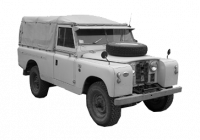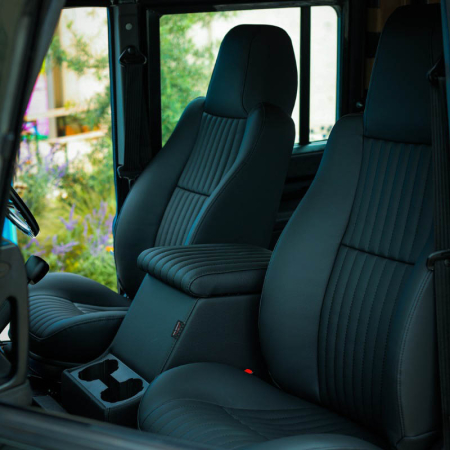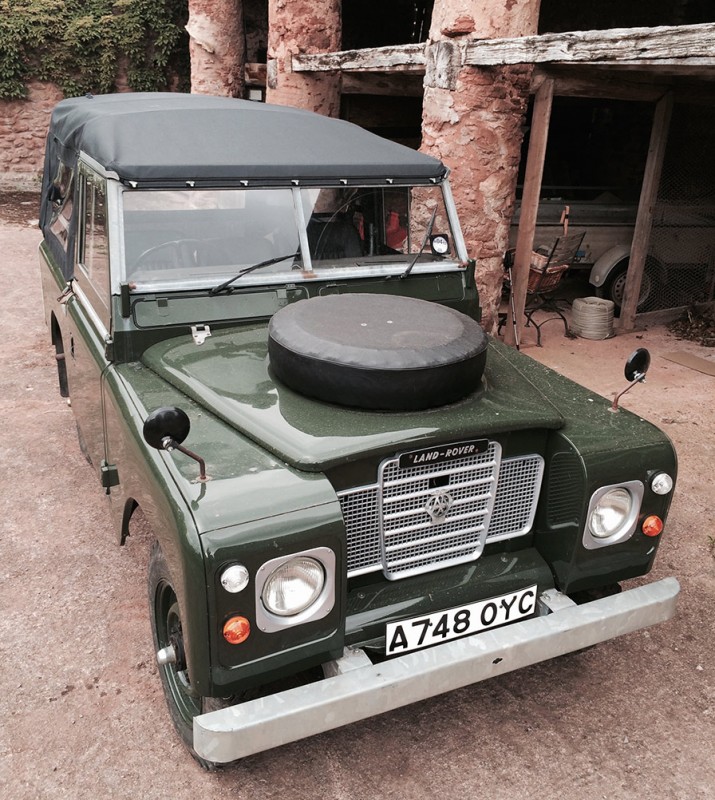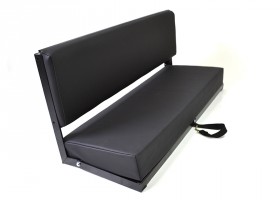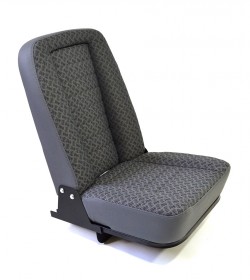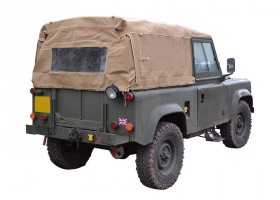This website requires cookies to provide all of its features. For more information on what data is contained in the cookies, please see our Privacy Policy page. To accept cookies from this site, please click the Allow button below.
Receive FREE UK and Selected EU Countries Shipping on Orders Over £150!
Search Model
Search Model
DESCRIPTION
Fits from the windscreen to the rear of the vehicle on all Short Wheelbase 88” Land Rovers
We are fortunate to retain all the original drawings for these hoods dating back to production and original design, enabling us to still manufacture the correct hood.
Lew Gostling was the man behind the design and production of these hoods at Land Rover back in their heyday.
Today we still follow the same methods of manufacture and ensure that the Hoods are correct to the OEM fitted parts of that era.
We use a high-grade window to reduce the risk of cracking or smoking and all our windows are edge finished with the correct tape that was used in production to finish the inside face.
All the hoods of this era had Vinyl fuel splash panels which protected them from over spill of petrol or diesel which helped to prevent this area from losing its proofing and colour. These you can see on the hoods as black vinyl patch above the fuel tank filler.
All the buckles and tips are solid brass and we only use nickel plated brass eyelets.
All our 88” Full Hoods have a rear window as standard and we also offer the option of “WSW” With Side Windows. Whichever version you choose we make sure that the same rollup straps are used which enable you to roll up the sides and the rear panels when required, a truly great way to enjoy a Land Rover.
Please note that as with all Short Wheelbase hoods if you choose the WSW option it has one window per side panel so a total of three windows.
We use a 100% Natural Cotton Fibre for Exmoor Canvas Hoods and we have a lot of input into this material at the point of production. Exmoor’s 18oz Natural Cotton Canvas over the years has changed with many of the old chemicals used in the past, no longer being used.
The Chemicals we now use are very environmentally based and many are organic, for us this is a big factor and part of our environmental strategy.
We appreciate that this does reduce the life span of the product compared to the heavily treated canvas of the past.
We pre-shrink the canvas and this helps to reduce the onward shrinkage when the product is in use, however if the hood when fitted is not kept lashed down in wet conditions shrinkage can occur please read the fitting instructions and care guide notes and watch our very handy video for fitting the correct way.
We see many hoods poorly fitted so watching our fitting guide to aid the life of your hood is a good tip.
These Original pattern hoods are designed to fit Original Galvanised style hoop sets.
As with all 100% Natural Fibre product it will fade over time and will have some shrinkage, the patterns allow for shrinkage and to increase the life span of your Exmoor hood make sure you follow the care instructions with the do’s and don’ts.
PLEASE READ CANVAS CARE INSTRUCTIONS:
Cotton canvas hoods have been a standard feature on Land Rovers since they first appeared in 1948. It is a hardwearing and durable material, but requires proper care to get the best results.
Canvas is a traditional product made from 100% natural cotton fibre. It is dyed to add colour and then treated to provide protection against rot, fungus and UV damage.
The canvas weave is designed to allow a certain amount of shrinkage along the length of a roll, approximately 2%
Shrinkage is a natural and unavoidable characteristic of canvas. You will notice on first fitting, your hood it appears a little baggy. As the hood shrinks it will settle to the shape of your vehicle to create a snug fit. However, if the hood the hood tension is not correctly maintained it will continue to shrink to the point it will no longer fit properly.
Following a few simple steps will ensure your hood fits correctly for many years.
Keeping a hood correctly tensioned is extremely important. Tension is applied to the hood using webbing straps and ropes. Starting from the front, the hood is secured above the windscreen. The front set of roof straps can be pulled tight around the front support hoop. Then, moving to the back of the vehicle, the rear curtain is secured in place and tensioned with the straps that come down to the body capping. The final step is to position the side curtains and tighten the ropes along the bottom edge.
Wetting the hood and allowing it to naturally dry, will cause the hood to shrink and conform to the shape of you vehicle. If possible this should be done a few times when the hood is new.
Ensuring the hood is correctly tensioned before it dries is extremely important, especially in the first four weeks.
If tension is not kept on these panels, especially when the hood is wet, the hood will creep forward. It is very difficult once a hood has been allowed to shrink to tension it back again. Try not to keep the hood sides and rear curtains rolled up at night when the hood will get damp or leave the rear curtain rolled up when it’s raining. If the hood does get wet with the side rolled up, try to get it tied back down and tensioned before it dries.
Allowing the hood to dry out with the sides rolled up is a classic problem and many owners are surprised how quickly this shrinkage can occur.
Ensuring the main hood straps are kept tensioned, especially when new, will greatly reduce problems at a later date. When you buy any new hood keep the tension on for at least the 1st four weeks! Then follow the simple rules of tensioning your hood when wet.
To ensure the longevity of your hood, we recommend applying a coat of canvas proofer such as Nikwax or Fabsil every 6 to 12 months.
Canvas should be cleaned by hand with warm water and soft brush or cloth. Do not be tempted to pressure wash you hood.
THIS PRODUCT FITS
CUSTOMER REVIEWS
Overall Rating




